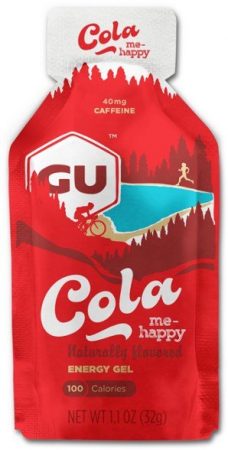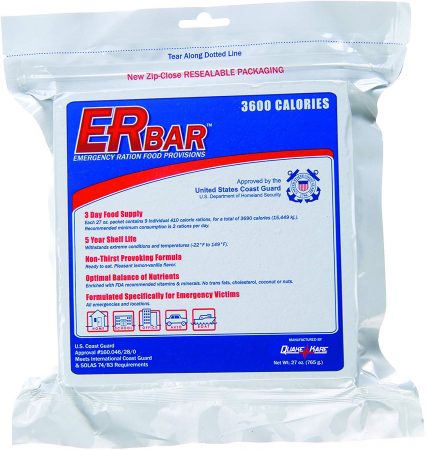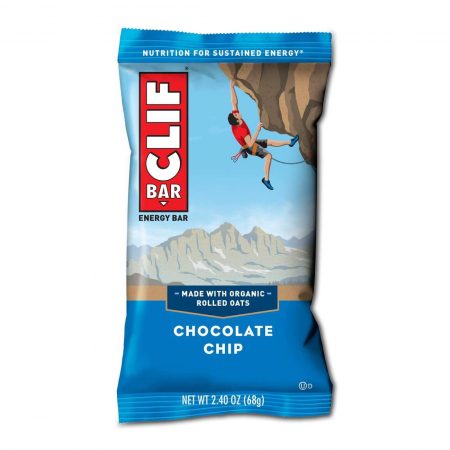Bug Out Bag Food
There is a lot of different information out there about bug out bag food. Most people are doing their best to provide information that they think will be helpful, but some of it is just bad.
Bug out bag food should be light, compact and calorie-dense. It should also need very little preparation. MREs, freeze-dried food, canned food, tuna/chicken pouches, energy gels, emergency rations, energy/ protein bars, nuts/dried fruit/trail mix, jerky/pemmican, candy, and drink mixes are all solid choices as bug out bag food.
Let's look at the types of food you should pack in your bug out bag and why.
[wc_toggle title="Table of Contents" padding="" border_width="" class="" layout="box"]
[/wc_toggle]
[wc_box color="inverse" text_align="left" margin_top="" margin_bottom="" class=""]
Thanks for supporting Ready Lifestyle! We participate in the Amazon associates program and other affiliate programs. We earn a small commission on qualifying orders at no expense to you.
How To Choose Bug Out Bag Food
Before we dig into the different types of food that make sense for a bug out bag, I want to quickly lay out the general idea behind a bug out bag. I'm a firm believer that you should understand why you're doing something instead of just following checklists.
[wc_box color="primary" text_align="left" margin_top="" margin_bottom="" class=""]
For a more in-depth look at bug out bags, check out this article.
Purpose of a bug out bag
A bug out bag is designed to get you from your home to a bug out location if you have to leave on foot or with no notice.
That's it.
You shouldn't be packing like your going to go camping for a week. You shouldn't be planning to walk for 8 hours then setting up a campsite and waiting until morning to start moving again.
Once you bug out you should keep going until you reach your bug out location only stopping to briefly rest, collect water, eat quickly or sleep.
Considerations for bug out bag food
The food that you decide to pack in your bug out bag should be light, compact, calorie-dense, and not need a lot of preparation. I also prefer food that doesn't need to be prepared and has a long shelf life.
The shelf life of food is important because your bug out bag is going to spend most of its time just sitting in a closet or basement. The longer the shelf life of your bug out bag food, the less that you need to change it out. This means less money and less work over the life of the bug out bag.
Size (being light and compact) is also important when choosing food for your bug out bag. As an example, canned food may seem like a good idea when you first look at it, but it weighs a lot and takes up a lot of space.

Being calorie-dense is another important factor to consider. Calories are energy, and that's the only reason that you're packing food in your bug out bag. The more calories that you can pack into your food, the more energy you'll be providing your body to keep moving toward your bug out location.
Finally, you want to pack food that doesn't need a lot of preparation. Try to focus on food that you can eat while you're walking so you don't need to stop to start a fire or get a stove going to cook your food.
Bug Out Bag Foods
The list below is there to get you thinking about what types of food works well in a bug out bag and why it works. It isn't all-inclusive so feel free to pack food that you like as long as it makes sense.
MREs
MREs (meals ready to eat) are military-style meals that meet all of the requirements for bug out bag food. They're easy to prepare, calorie-dense, light and don't take up a lot of room. The shelf life is also pretty good (around 5 years) so you won't have to replace them all that often.
You can make an MRE even lighter and more compact by opening them and removing all of the extra packaging. Feel free to take any of the other things that you don't need or won't eat.
Freeze-dried Food
Freeze-dried foods are great for backpackers and campers that are looking for a lightweight option to take along with them. They fill most of the boxes for bug out bag food, but they also usually need to have boiling water added to them before you can eat them.
Does that mean that you should completely rule them out? Not necessarily. I don't keep any in my bug out bag, but don't write them off if they make sense for you. As long as you're willing to boil water to cook them they're great.
I'd suggest choosing something else if you live in an area that doesn't have a lot of natural water sources.
Canned Foods
Canned foods last for a long time and usually can be eaten cold so they don't take a lot of time to prepare. I don't like canned foods because they take up a lot of space and weigh a lot compared to the number of calories that you get from them.
The exception to this is canned meats like chicken, tuna, and Spam. I'd rather have tuna and chicken in pouches because they're a little lighter, but a can doesn't add all that much weight.
Tuna/Chicken Pouches
Tuna and chicken pouches are a great option for a bug out bag. They're cheap and last for quite a while.
The only thing they have going against them is the pouch. Try to pack them in a way so that the pouch won't get punctured by other things in your bug out bag.
Energy Gels
There has been a ton of research put into inventive ways to fuel the body during strenuous activity. Energy gels are one of the products that have come out of that research.
They're mostly sugar so don't expect them to be good as your sole source of food, but they're great when your body is depleted and run down. I'd have a few on top of your normal food to keep you going through a few long days of walking.
Emergency Rations
Emergency rations (sometimes called lifeboat rations) are specifically designed to be shelf-stable for years, calorie-dense and relatively lightweight. They're pretty much a perfect food for any emergency and always have some in my bug out bag.
You may have seen people saying that they aren't good for bugging out but that's pretty ridiculous. I would suggest ignoring the serving suggestions and just eating enough so you're replacing the calories that you're using during the day.
They may not be great food, but they are a great emergency food.
Energy/Protein Bars
Energy bars and protein bars can be good survival food and bug out bag food. Most of them are specifically formulated to maximize the way that they provide the body with calories and other nutrients.
They have the added benefit of being easy to eat on the move and with no advance preparation.
Jerky/Pemmican
Jerky and pemmican are both a good source of food and calories. They last for a couple of years as well so they shouldn't need to be replaced too often.
One of the best things with having jerky in your bug out bag is that it can be eaten while you're walking and tends to make you feel more full than something like a PowerBar.
Drink Mixes
Drink mixes aren't exactly food, but they do provide some calories and energy so they can make sense to add to a bug out bag. Don't rely on them too much, but they can give you a little sugar boost and change things up so you're not just drinking water.
Dried Fruit, Nuts and Trail Mix
Dried fruit, nuts and trail mix can be a good idea for bug out bag food, but you need to be careful about how long you leave it in your bug out bag before checking on it. The oils in some of these foods can lead to spoilage pretty quickly.
Dried fruit can normally go for about a year before it spoils while nuts have about a 6-month shelf life.
Candy
Candy of all kinds is the old school way of providing the body with quick energy during hard work. It basically does the same thing that energy gels would do for you plus having something sweet is a good way to lift the spirits during a stressful time.
Look for candy bars that can last for a while in a backpack and will hold up well to being bounced around and beat up a little.
How Much Food Should go in a Bug Out Bag
The amount of food that each of us needs in our bug out bags is going to vary based on our individual needs.
A generic "72-hour" bag is going to need enough food to keep you going for three days. This obviously doesn't work if you're in a situation where you may need to spend 4 or more days walking to your bug out location.
Make sure that you have enough food in your bug out bag to last for however long you plan to be traveling.
How much food do you need per day?
WebMD says that an active average-sized man should consume somewhere between 2,200 and 2,800 calories per day. That number is a good goal if you fall into that category and you're not in a survival situation.
In a survival situation, you need about 1,200 calories at a minimum for long term survival. This does vary based on size and weight but it's a good average for most people. At 1,000 calories a day the physical effects on the body are roughly equivalent to total starvation.
Keep these numbers in mind when you're planning how much food you need to have for each day. I try to pack about 1,500 calories per day in my bug out bag. That's going to leave me hungry when I get to where I'm going, but it keeps the load lighter and is still in the normal calorie range.
Recommended Bug Out Bag Foods
You're free to choose whatever kind of foods that you want, but this is the food that I pack in my bug out bags.
ER Bar - These make up a majority of the calories in my bug out bags. Each 3,600 calorie ration will last me 2 days. I expect to feel kind of hungry, but I also have other food to snack on as I need it or when I need a boost of energy to keep going for a little bit longer.
Clif Bars - Everyone probably knows what a Clif Bar is. They taste good, provide a decent amount of nutrients and have about 250 calories apiece. I pack 1 or 2 per day in case I need something extra to fill me up a little more than just the ER Bars.
GU Energy Gel - I pack some GU Energy Gel because I find that it gives me a decent boost of energy when I need it. These have 40mg caffeine, 55mg sodium, 30mg potassium and sugars that are designed to quickly absorb into the body. They aren't going to work miracles for you but they definitely help toward the end of the day. I like to have 2 per day to use toward the end of the day when I find myself dragging and wanting to rest more and more often.
Conclusion
Bug out bag food doesn't need to be complicated, but it does need to make sense for your situation. Choose foods that you like, don't take up a lot of space, don't weigh a lot, pack a lot of calories and last for a while. You also need to make sure that you're getting more than 1,200 calories a day at a minimum.
Other than those few guidelines, you can choose whatever you like!
Best Bug Out Bag Food – The Top Food for Bugging Out is republished from: https://readylifestyle.com



Comments
Post a Comment